





Adrenaline
Application instruction:
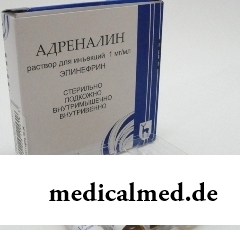 Adrenaline – alpha and beta-adrenergic agonist with hypertensive, broncholitic, antiallergic action.
Adrenaline – alpha and beta-adrenergic agonist with hypertensive, broncholitic, antiallergic action.
Form of release and structure
Dosage forms:
- Solution for injections: slabookrashenny or colourless transparent liquid with a specific smell (on 1 ml in ampoules, in a blister strip packaging on 5 ampoules, in a cardboard pack 1 or 2 packagings in a set with the scarificator or a knife ampoule (or without them); for a hospital – on 20, 50 or 100 packagings in cardboard boxes);
- Solution for topical administration of 0,1%: transparent colourless or slabookrashenny liquid with a specific smell (on 30 ml in glass bottles of dark color, in a cardboard pack 1 bottle).
For injections contains in 1 ml of solution:
- Active ingredient: Epinephrinum – 1 mg;
- Auxiliary components: sodium disulphite (sodium metabisulphite), Acidum hydrochloricum, sodium chloride, chlorobutanol гемигидрат (хлоробутанолгидрат), глицерол (glycerin), dinatrium эдетат (disodium salt of ethylene diamine tetraacetic acid), water for injections.
For topical administration contains in 1 ml of solution:
- Active ingredient: Epinephrinum – 1 mg;
- Auxiliary components: sodium metabisulphite, sodium chloride, хлоробутанолгидрат, glycerin (глицерол), disodium salt of ethylene diamine tetraacetic acid (dinatrium эдетат), acid solution of hydrochloric 0,01 M.
Indications to use
Solution for injections
- The Quincke's disease, small tortoiseshell, acute anaphylaxis and other allergic reactions of immediate type developing against the background of hemotransfusion, use of medicines and serums, the use of foodstuff, stings of insects or administration of other allergens;
- Asthma of physical effort;
- Asystolia (including at sharply developed atrioventricular block of the III degree);
- Stopping of the asthmatic status of bronchial asthma, acute management at a bronchospasm during an anesthesia;
- Morganyi-Adams-Stokes's syndrome, total atrioventricular block;
- Bleeding from superficial vessels of mucous membranes (including a gingiva) and skin;
- Arterial hypotension, in case of lack of therapeutic effect of use of adequate volumes of the replacing liquids (including shock, open heart operations, bacteremia, a renal failure).
Besides, use of drug is shown as a vasoconstrictor for a stop of bleeding and lengthening of the period of effect of local anesthetics.
Solution for topical administration of 0,1%
Solution is applied to a bleeding stop from superficial vessels of mucous membranes (including a gingiva) also by skin.
Contraindications
- Coronary heart disease, tachyarrhythmia;
- Arterial hypertension;
- Fibrillation of ventricles;
- Hypertrophic subaortic stenosis;
- Pheochromocytoma;
- Period of pregnancy and breastfeeding;
- Individual intolerance of components of drug.
In addition contraindications to use of solution for injections:
- Ventricular arrhythmias;
- Fibrillation of auricles;
- Chronic heart failure of the III-IV degree;
- Myocardial infarction;
- Chronic and acute form of arterial insufficiency (including the anamnesis – atherosclerosis, an arterial embolism, a Thrombangiitis obliterans, a Raynaud's disease, a diabetic endarteritis);
- The expressed atherosclerosis, including cerebral atherosclerosis;
- Organic injuries of a brain;
- Parkinson's disease;
- Hypovolemia;
- Thyrotoxicosis;
- Diabetes mellitus;
- Metabolic acidosis;
- Hypoxia;
- Hypercapnia;
- Pulmonary hypertensia;
- Cardiogenic, hemorrhagic, traumatic and other types of shock of not allergic genesis;
- Cold injury;
- Convulsive syndrome;
- Closed-angle glaucoma;
- Prostate hyperplasia;
- Simultaneous use with inhalation means for the general anesthesia (halothane), with local anesthetics at anesthesia of fingers of hands and legs (risk of ischemic damage of fabrics);
- Age up to 18 years.
All above-mentioned contraindications are relative at states, life-threatening the patient.
With care it is necessary to appoint solution for injections at a hyperthyroidism and the patient at advanced age.
For prevention of arrhythmias drug is recommended to be used in combination with beta adrenoblockers.
With care appoint Adrenaline in the form of solution for topical administration sick with a metabolic acidosis, a hypoxia, a hypercapnia, fibrillation of auricles, pulmonary hypertensia, ventricular arrhythmia, a hypovolemia, a myocardial infarction, shock of not allergic genesis (including cardiogenic, hemorrhagic, traumatic), occlusal diseases of vessels (including atherosclerosis, an arterial embolism, a Thrombangiitis obliterans, a diabetic endarteritis, cold injuries, a Raynaud's disease in the anamnesis), a thyrotoxicosis, a prostatauxe, closed-angle glaucoma, a diabetes mellitus, cerebral atherosclerosis, a convulsive syndrome, Parkinson's disease; at simultaneous use for the general anesthesia of inhalation drugs (Ftorotanum, chloroform, cyclopropane), at advanced or children's age.
Route of administration and dosage
Solution for topical administration
Solution is applied locally.
At a stop of bleeding it is necessary to put the tampon moistened in solution to a wound.
Solution for injections
Solution is intended for intramuscular (in oil), hypodermic (п / to), intravenous (in/in) drop or jet introduction.
The recommended dosing mode for adults:
- Acute anaphylaxis and other reactions of allergic genesis of immediate type: in/in slowly – 0,1-0,25 mg should be parted in 10 ml 0,9% of solution of sodium of chloride. For achievement of clinical effect therapy is continued in the way in/in drop by introductions, in a proportion 1:10000. In the absence of real threat of life of the patient the drug is recommended to be administered in oil or п / to in a dose of 0,3-0,5 mg, if necessary it is possible to repeat an injection with an interval of 10-20 minutes to 3 times;
- Bronchial asthma: п / to – 0,3-0,5 mg, for achievement of desirable effect repeated introduction of the same dose every 20 minutes to 3 times, or in/in – 0,1-0,25 mg, divorced from 0,9% of solution of sodium of chloride in a proportion 1:10000 is shown;
- Arterial hypotension: in/in kapelno with a speed of 0,001 mg a minute, increase in rate of administering up to 0,002-0,01 mg a minute is possible;
- Asystolia: vnutriserdechno – 0,5 mg in 10 ml of 0,9% of solution of sodium of chloride (or other solution). At resuscitation actions the drug is administered in/in, in a dose of 0,5-1 mg every 3-5 minutes, divorced in 0,9% of solution of sodium of chloride. At an intubation of a trachea of the patient introduction can be carried out by endotracheal instillation in the dose exceeding a dose for in/in introductions to 2-2,5 times;
- Vasoconstrictor: in/in kapelno with a speed of 0,001 mg a minute, it is possible to increase the speed of infusion to 0,002-0,01 mg a minute;
- Lengthening of effect of local anesthetics: the dose is appointed in concentration of 0,005 mg of drug to 1 ml of anesthetic, at spinal anesthesia – on 0,2-0,4 mg;
- Morganyi-Adams-Stokes's syndrome (bradiaritmichesky form): in/in kapelno – 1 mg in 250 ml of 5% of solution of glucose, gradually increasing infusion speed to emergence of minimum sufficient number of cordial reductions.
The recommended dosing for children:
- Asystolia: the newborn – in/in (slowly), on 0,01-0,03 mg on 1 kg of weight of the child every 3-5 minutes. To children after 1 month of life – in/in, on 0,01 mg/kg, further on 0,1 mg/kg every 3-5 minutes. After introduction of two standard doses transition to introduction of 0,2 mg/kg of weight of the child with an interval of 5 minutes is allowed. Endotracheal introduction is shown;
- Acute anaphylaxis: п / to or in oil – on 0,01 mg/kg, but no more than 0,3 mg. If necessary the procedure is repeated with an interval of 15 minutes by no more than 3 times;
- Bronchospasm: п / to – on 0,01 mg/kg, but no more than 0,3 mg, if necessary the drug is administered every 15 minutes to 3-4 times or every 4 hour.
Solution for injections Adrenaline can also be used locally, for a stop of bleedings, having put the tampon moistened in solution to a wound surface.
Side effects
- Nervous system: often – an alarming state, a headache, a tremor; infrequently – fatigue, dizziness, nervousness, frustration of the personality (a disorientation, psychomotor arousing, disturbance of memory and psychotic frustration: panic, agressive behavior, paranoia, shizofrenopodobny frustration), muscular twitchings, sleep disorder;
- Cardiovascular system: infrequently – tachycardia, stenocardia, bradycardia, a heart consciousness, decrease or increase in the arterial pressure (AP), against the background of high doses – ventricular arrhythmias (including fibrillation of ventricles); seldom – thorax pain, arrhythmia;
- Alimentary system: often – nausea, vomiting;
- Allergic reactions: infrequently – skin rash, a bronchospasm, a mnogoformny erythema, a Quincke's disease;
- Urinary system: seldom – the painful, complicated urination at patients with a prostate hyperplasia;
- Others: infrequently – the increased sweating; seldom – a hypopotassemia.
In addition, owing to use of solution for injections:
- Cardiovascular system: seldom – a fluid lungs;
- Nervous system: often – a tic; infrequently – nausea, vomiting;
- Local reactions: infrequently – burning and/or pain in the place in oil of an injection.
It is necessary to report about emergence of the specified or other undesirable effects to the doctor.
Special instructions
Accidentally entered into Epinephrinum can sharply raise the ABP.
Against the background of increase in the ABP at administration of drug development of attacks of stenocardia is possible. Action of Epinephrinum can cause reduction of a diuresis.
Infusion should be carried out to large (preferably central) vein, using the device for regulation of rate of administering of drug.
Endocardiac introduction at an asystolia is applied in case of unavailability of other ways as there is a risk of a cardiac tamponade and pheumothorax.
Treatment is recommended to be accompanied with determination of level of maintenance of potassium ions in blood serum, measurement of the ABP, minute volume of blood circulation, pulmonary pressure, jamming pressure in pulmonary capillaries, a diuresis, the central venous pressure, carrying out an electrocardiography. Use of high doses at a myocardial infarction can strengthen ischemia because of increase in oxygen requirement.
During treatment of patients with a diabetes mellitus increase in a dose of derivatives of sulphonylurea and insulin as Adrenalin increases a glycemia is required.
Absorption and final concentration of Epinephrinum in plasma at endotracheal introduction can be unpredictable.
At depressed cases use of drug does not replace transfusion of blood-substituting liquids, saline solutions, blood or plasma.
Prolonged use of Epinephrinum causes narrowing of peripheral vessels, risk of development of a necrosis or gangrene.
It is not recommended to use drug at the time of delivery for increase in the ABP, introduction of high doses for weakening of reduction of a uterus can become the reason of a long atony of a uterus with bleeding.
Use of Epinephrinum at a cardiac standstill at children is allowed on condition of respect for care.
Drug withdrawal should be carried out by a gradual dose decline not to allow development of arterial hypotension.
Adrenaline easily collapses the alkylating means and oxidizers, including bromides, chlorides, iron salts, nitrites, peroxides.
At emergence of a deposit or discoloration of solution (pinkish or brown) drug is not suitable for use. Unused drug is subject to utilization.
The doctor solves a question of the admission of the patient to control of vehicles and mechanisms individually.
Medicinal interaction
- Blockers α-and β-adrenoceptors - - - - - - - - - – antagonists of Epinephrinum (at therapy of heavy anaphylactic reactions by β-adrenoblockers efficiency of Epinephrinum at patients is reduced, it is recommended to replace it with administration of salbutamol in/in);
- Other adrenomimetik – can strengthen action of Epinephrinum and expressiveness of side effects from cardiovascular system;
- Cardiac glycosides, quinidine, tricyclic antidepressants, dopamine, means for inhalation anesthesia (a halothane, метоксифлуран, энфлуран, изофлуран), cocaine – raises probability of development of arrhythmias (combined use is allowed with respect for extreme care, or it is not allowed);
- Narcotic analgetics, somnolent, anti-hypertensive means, insulin and other hypoglycemic medicines – their efficiency decreases;
- Diuretics – increase in pressor effect of Epinephrinum is possible;
- Monoamine oxidase inhibitors (селегилин, Procarbazinum, furasolidone) – can cause the sudden and expressed increase in the ABP, a headache, cardiac arrhythmia, vomiting, hyperpyrexial crisis;
- Nitrates – weakening of their medical action is possible;
- Phenoxybenzamine – tachycardia and strengthening of hypotensive effect are probable;
- Phenytoinum – sudden decrease in the ABP and bradycardia (depending on rate of administering and a dose);
- Drugs of hormones of a thyroid gland – mutual strengthening of action;
- The medicines extending a QT interval (including астемизол, цизаприд, терфенадин) – lengthening of a QT interval;
- Diatrizoatums, yotalamovy or yoksaglovy acids – strengthening of neurologic effects;
- Ergot alkaloids – strengthening of vasopressor effect (up to the expressed ischemia and a gangrenosis).
Terms and storage conditions
To store at a temperature up to 15 °C in the place protected from light. To protect from children.
Period of validity – 3 years.
Caries is the most widespread infectious disease in the world to which even flu cannot compete.

Statistically, at the address to doctors seven of each ten patients complain of a headache. Actually people, periodically...
Section: Articles about health
Partial and the more so full loss of hearing significantly reduces quality of life. Difficulties with communication lead to loneliness and isolation. The person who badly hears experiences difficulties with social and professional implementation, quite often has problems in...
Section: Articles about health
Proofs of efficiency of Mildronate at treatment of coronary heart disease with stenocardia can be found in many publications of the end of the twentieth century. Researches were conducted since 1984, including placebo - controlled effects. In total clinical tests of Mildronate were carried out for more than thirty years....
Section: Articles about health
High temperature - a frequent symptom of such widespread diseases as a SARS, quinsy, pneumonia, etc. To reduce heat, облег...
Section: Articles about health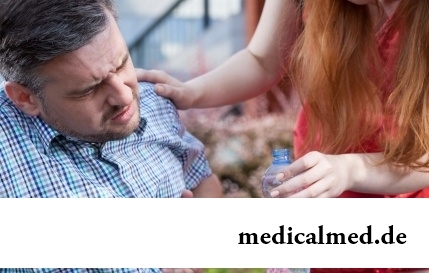
Each of us faces from time to time that other people need the immediate help. We react to it differently: one at once call doctors and police, others rush to victims and try to save them independently. Some at all...
Section: Articles about health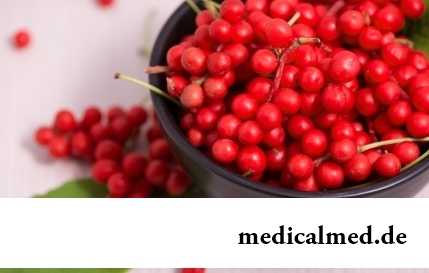
Statistically, pathologies of a thyroid gland in the world more than 500 million people have. Failures in work of this body lead to heavy disbolism, development of heart diseases, vessels, a reproductive and nervous system. In hard cases excess or insufficient production of the main hormones of a thyroid gland (thyroxine and triiodothyronine) leads to essential decline in quality of life and disability....
Section: Articles about health
It is pleasant to state a possibility of improvement of quality of life of people with problems of functioning of secretory system. By efforts that...
Section: Articles about health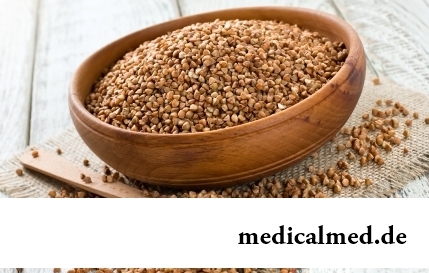
History of cultivation of a buckwheat contains more than five thousand years. Grain which is received from this plant is used for preparation of porridges, soups, baked puddings and puddings, do flour which is one of the main ingredients of the noodles popular in of it...
Section: Articles about health
Dogrose – one of the most widespread adornment and medicinal plants growing practically in all territory of our country. To most of Russians it is a beautiful bush it is known, first of all, as a source of fruits, extremely vitamin-rich. However curative properties of a dogrose are not limited to it at all. About how still it is possible to use a plant in the medical purposes, we will tell today....
Section: Articles about health
The technique of acupuncture (acupuncture) is used in the medical purposes more than three and a half millennia. It widely races...
Section: Articles about health
Olive oil – the product capable to make a powerful contribution to health of the person if it includes it in the diet. The rich vitamin composition of oil does it by a product number one from many diseases including from deadly. Only two tablespoons...
Section: Articles about health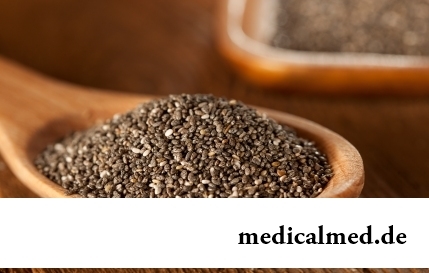
The chia plant, or the Spanish sage, is from South America. The indigenous people of the continent since ancient times used its seeds in food: small, but very nutritious kernels, in a form the reminding fasolina. Indians knew about useful properties of seeds of a chia, and applied them to maintenance of vitality and increase in endurance before serious exercise stresses....
Section: Articles about health
The depression not without reason is considered one their main troubles of our century: for scientific and technical progress, acceleration of rate of life and a surplus of information of people it is forced to pay with stresses, negative emotions and weakening of protective forces of an organism. As a result widely the states which are characterized by the increased uneasiness, falling of interest in life, spiritual and physical discomfort extend....
Section: Articles about health
All are familiar with cold, and practically everyone believes that he has sufficient knowledge and experience that correctly to treat it. N...
Section: Articles about health
All parents are ready to what the baby often and pisat much. Since then, as the absorbing diapers strongly became current, keeping of the kid in dryness does not represent any problems. But if the grown-up kid continues to urinate in panties, parents of a nacha...
Section: Articles about health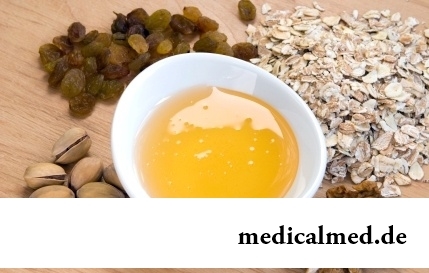
Let's begin with the fact that a separate illness which is called "adjournment of salts", just does not exist. In practice this household name of disbolism leading to development of a number of diseases. Pathological process consists that in an organism there is an accumulation of salts of uric acid (as a rule, owing to failure of a water salt metabolism or insufficiently effective work of secretory system)....
Section: Articles about health
The business lady, the become mother, it is necessary to solve an array of problems. But of them is main: how to combine the beloved child and work?...
Section: Slideshow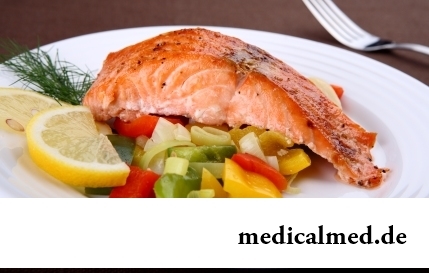
Diseases of joints often begin imperceptibly for the person. The first stages of destruction of the cartilaginous tissue providing soft and free sliding of heads of bones in joint bags proceed slowly and absolutely without serious consequences. Especially unpleasantly for that this пр...
Section: Articles about health
The number of long-livers is very small. One person from 5 thousand lives up to age of 90 years, and the centenary boundary steps over only one of 20 thousand. However, doctors claim that each of us is quite able to affect own destiny. At the same time it is not so much about living as long as possible, how many about an opportunity to keep physical and intellectual activity and to avoid decrepitude. We will also talk about the ways helping to achieve this result today....
Section: Articles about health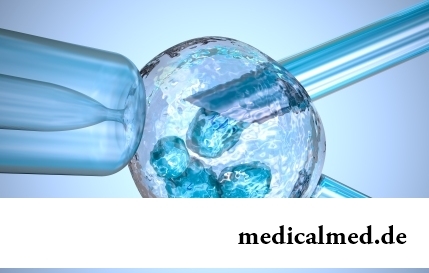
EKO, or extracorporal fertilization - a method of treatment of infertility which became the reason of a set broken mines in due time...
Section: Articles about health
80% of women at least once to lives complained of discomfortable feelings to breasts, consolidations and nagrubaniye. These are mastopathy symptoms. The mastopathy is characterized by change of a ratio between ferruterous and connective tissue tissues of mammary glands. It can bring...
Section: Articles about health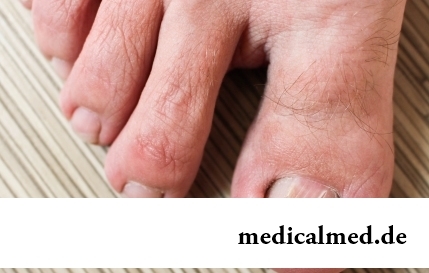
The word "onikhokriptoz" is unfamiliar to most of people, meanwhile quite so physicians call very widespread problem: the growing of edge of a nail into surrounding fabrics causing inflammatory process. Usually the illness affects thumbs of legs, and is followed by reddening, hypostasis, and in the started cases – release of pus. Patients complain of the pain amplifying when walking, problems with the choice of footwear....
Section: Articles about health
The body of the person almost for 60% consists of water. It is so important for normal functioning of an organism that loss of all is ponut...
Section: Articles about health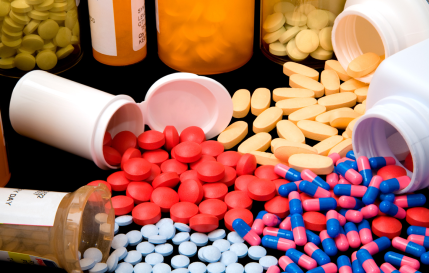
Long time antibiotics were considered as a panacea from all diseases and were appointed even at insignificant symptoms of an infection. Even now not everyone knows in what force of antibiotics how and when they should be accepted. Let's discredit 7 popular myths about such drugs...
Section: Articles about health



